While this is a detailed guide, it’s structured for easy navigation. We recommend reading sequentially to fully grasp the process of tackling both seborrheic dermatitis and subsequent hair loss.
Inside this Guide:
- The Primary Cause: Uncover the most frequent culprit behind seborrheic dermatitis and related hair loss.
- Effective Treatments: Explore scientifically-backed and popular methods to combat seborrheic dermatitis.
- Hair Loss Factors: Identify potential elements that might be worsening your hair loss.
- Hair Growth Strategies: Learn actionable steps to revitalize hair growth after addressing scalp issues.
Feel free to use the table of contents to jump to sections of interest. However, for a complete understanding, reading in order is recommended. Your questions and experiences are valuable – please share them in the [comments sections at the end of this page][1].
2018 Update: Considering internal factors like stress or nutrition in your skin and hair issues? [SkinSupport][2] is a systemic approach you might find beneficial.
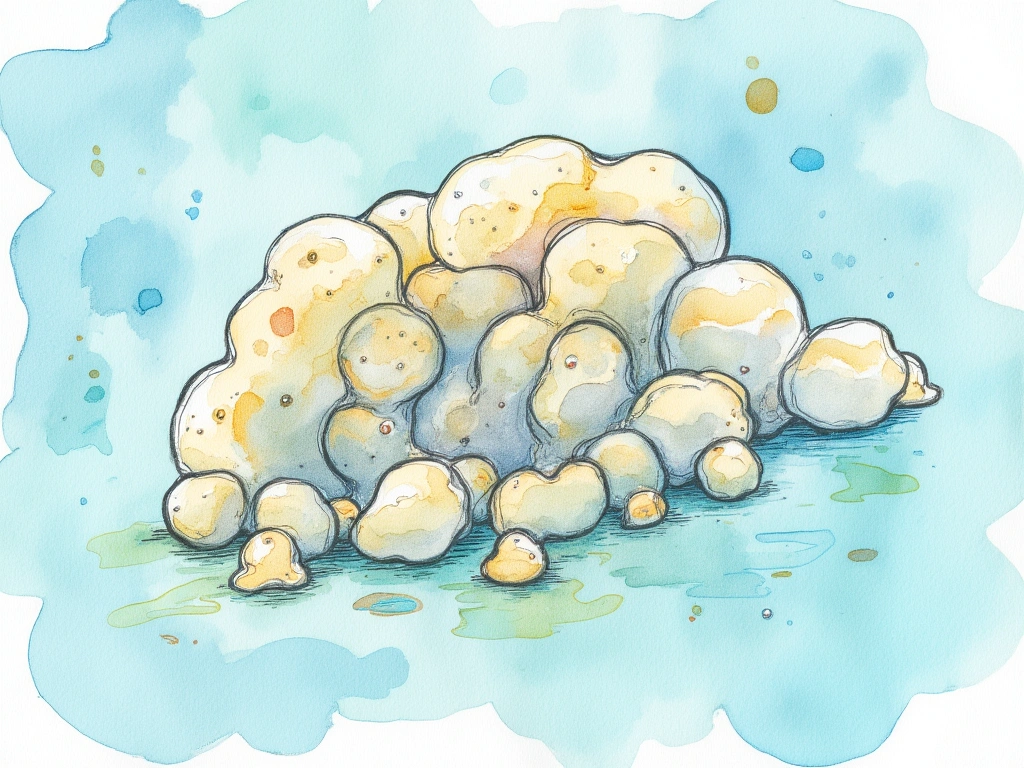
The Role of Malassezia Fungus in Seborrheic Dermatitis and Hair Loss
Hair loss is a frequent and distressing consequence of seborrheic dermatitis, particularly when scalp inflammation and flaking become widespread. However, the precise mechanism linking these two conditions isn’t always clear.
Is hair loss a direct effect of seborrheic dermatitis itself, or are they both triggered by shared underlying factors?
Medical research and common understanding point to Malassezia yeast as a major contributor to seborrheic dermatitis. This yeast thrives on lipids (fats), making sebum—the scalp’s natural protective oil—a primary food source.
Sebum, secreted by hair follicles, is crucial for skin protection and moisture retention. Malassezia exploits these very lipids, making it a common inhabitant of skin, even in those without seborrheic dermatitis.
For many, Malassezia remains harmless. But in susceptible individuals, it provokes seborrheic dermatitis symptoms and subsequent hair loss.
In affected individuals, Malassezia appears to disrupt the skin’s defense system and invade hair follicles [1]. This follicular invasion is strongly suspected to be the root cause of associated hair loss.
For a deeper dive into the mechanisms of seborrheic dermatitis and Malassezia’s role, explore this detailed article on the possible causes of seborrheic dermatitis. It offers a more in-depth perspective, though it’s beyond the immediate scope of this hair loss-focused discussion.
When Malassezia Might Not Be the Only Culprit
While Malassezia is a common factor, seborrheic dermatitis and hair loss can sometimes stem from other microorganisms—bacteria, other types of yeast, or fungi. In these instances, treatments specifically targeting Malassezia might be less effective. However, many general principles discussed here may still be relevant and helpful.
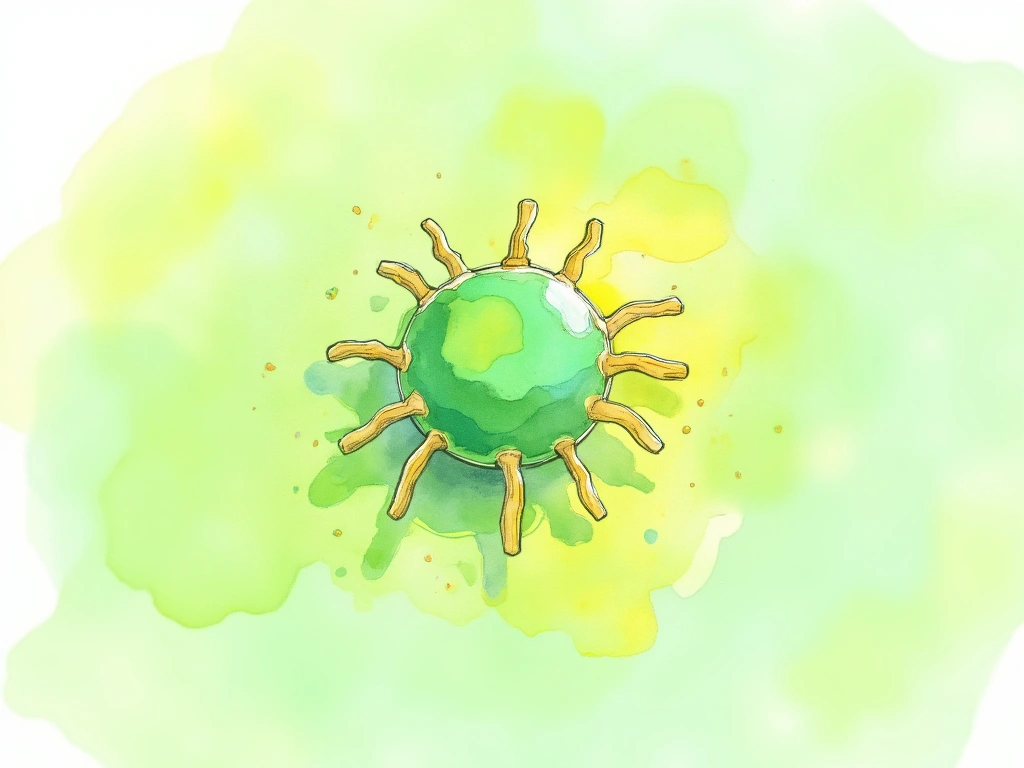
Combating Malassezia for Hair Regrowth
If Malassezia overgrowth is indeed contributing to hair loss, directly addressing this yeast is a logical step towards restoring hair growth. By reducing Malassezia and improving scalp health, we aim to create an environment conducive to natural hair regrowth.
This section reviews widely recognized and documented methods for controlling Malassezia. We’ll begin with well-researched, commercially available anti-fungal treatments, followed by exploring popular natural alternatives, some of which also have scientific backing.
Pyrithione Zinc: A Leading Anti-Malassezia Solution
Pyrithione zinc stands out as a frequently used anti-fungal agent against Malassezia. Its presence in Head & Shoulders shampoo, a globally recognized brand, speaks to its widespread use.
Consistent use of pyrithione zinc products has demonstrated effectiveness in decreasing Malassezia populations on the scalp, promoting hair regrowth, and normalizing skin structure [2]. However, research specifically examining its impact on hair growth in severe Malassezia infections is limited. Most studies are broader, assessing its effects on general hair loss and growth.
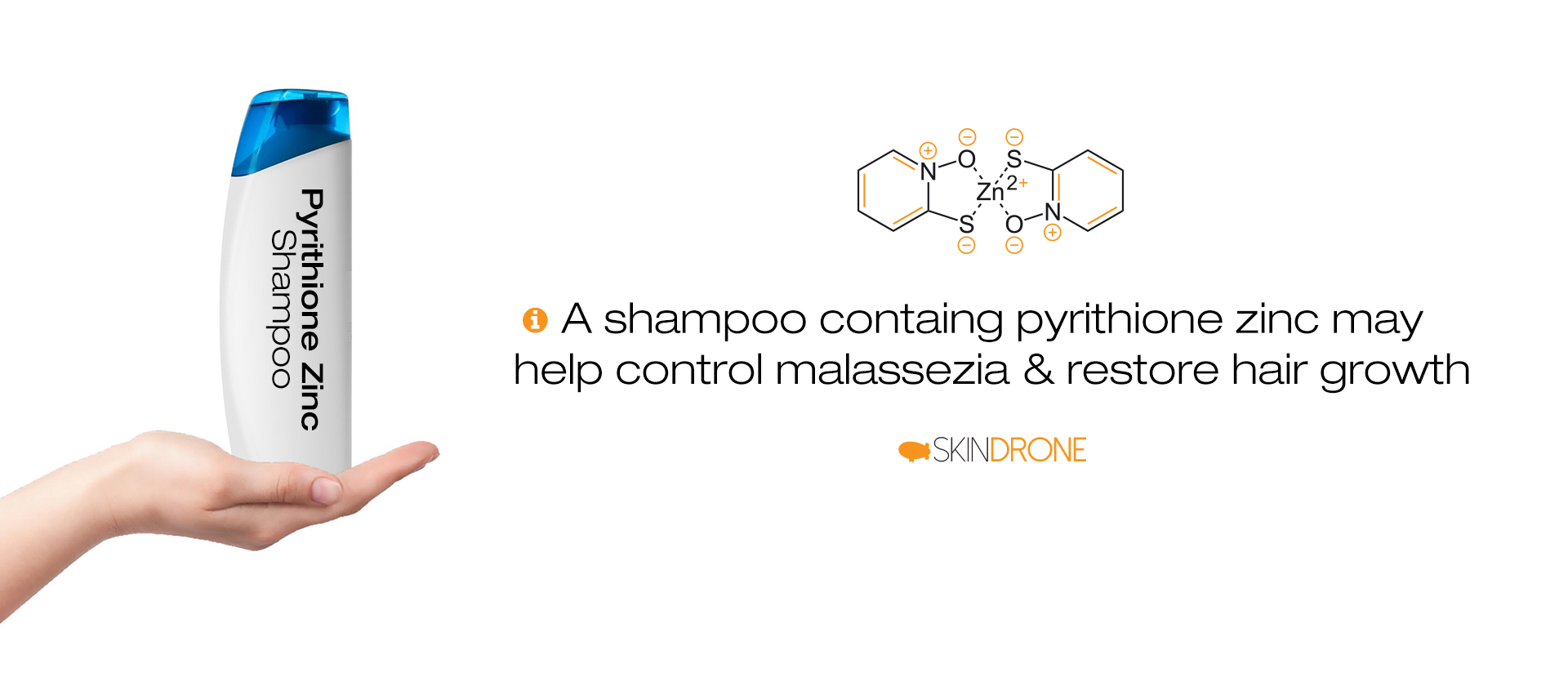
Pyrithione Zinc and Hair Growth: Key Research Findings
Despite the need for more targeted research, pyrithione zinc is a well-documented anti-fungal agent effective against Malassezia. Here are notable insights from various studies:
- Pyrithione zinc outperforms ketoconazole in improving hair quality and reducing scalp scaling and itching [3].
- It aids in normalizing skin cell formation (keratinization) and sebum production, contributing to a healthier scalp [4].
- Selenium sulfide may be more potent than pyrithione zinc in reducing Malassezia yeast counts [5].
- Regular shampoo use (2-3 times weekly) might slightly decrease hair thickness but significantly boosts new hair growth [].
One study [7] investigating hair growth effects found daily use of pyrithione zinc led to a noticeable increase in total hair count. However, this study excluded participants with seborrheic dermatitis, psoriasis, or other scalp infections, limiting its direct relevance to those experiencing Malassezia-related hair loss.
For in-depth information on pyrithione zinc, including safety and how it works, refer to this article: treating seborrheic dermatitis with zinc pyrithione.
Ketoconazole (Nizoral): A Stronger Option for Hair Growth?
Ketoconazole, another common anti-fungal, is often considered more potent than pyrithione zinc in treating seborrheic dermatitis, according to much medical literature [8]. It’s also a popular choice among individuals addressing premature balding.
This suggests ketoconazole may offer superior Malassezia control and hair regrowth benefits compared to pyrithione zinc. However, a study where participants tested both treatments indicated a preference for pyrithione zinc in terms of overall effectiveness.
A detailed review of ketoconazole for seborrheic dermatitis is available here: treating seborrheic dermatitis with ketoconazole.
Ketoconazole and Hair Growth: Key Research Findings
- Despite its potential strength, users in one study reported better overall hair health (combability, smoothness, frizz reduction) with pyrithione zinc than ketoconazole [9].
- Animal studies on mice suggest ketoconazole can stimulate hair growth, especially when formulated in a shampoo for better scalp penetration [10].
- Using ketoconazole shampoo 2-3 times weekly for six months significantly reduced hair shedding (almost 20%) compared to other anti-dandruff shampoos tested, although it didn’t change hair density [11].
- Regular ketoconazole use has been shown to increase hair shaft thickness while slightly decreasing sebum production on the scalp [12].
Raw Honey: A Natural Approach to Malassezia Control
Traditional Arabic medicine has long utilized honey for skin fungal infections. Modern research confirms honey’s anti-fungal properties against Malassezia, along with broad antimicrobial effects [13]. This makes raw honey a compelling natural option for managing Malassezia and fostering a healthy scalp environment.
Honey treatments for seborrheic dermatitis are discussed extensively here: basics of treating seborrheic dermatitis with raw honey. Let’s focus on its potential for hair growth.
Raw Honey and Hair Growth: Limited but Promising Research
Scientific literature directly addressing honey’s impact on hair growth is still emerging.
- One report noted hair regrowth in a dog treated with honey on severely damaged skin from a house explosion; untreated areas showed no regrowth ([source][3]).
- A study involving 20 seborrheic dermatitis patients reported subjective (self-reported) hair loss improvement with regular honey treatments [14].
- A 2000 patent suggests a honey, vinegar, and water mix may stimulate new hair growth and reduce hair loss, though hair growth wasn’t the patent’s primary focus ([source][4]).
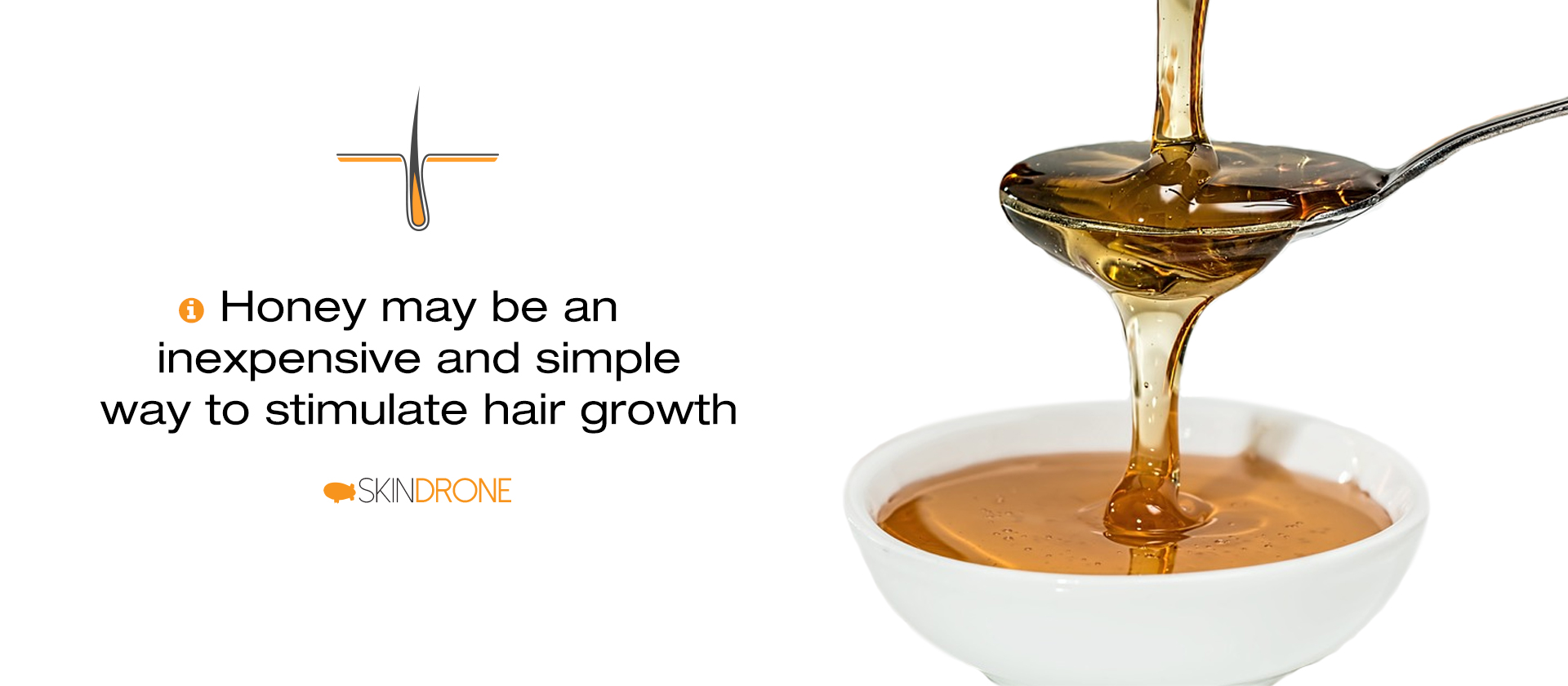
Raw Honey and Hair Growth: Online Insights
Beyond formal research, online discussions abound regarding honey’s hair growth potential in blogs and forums. While these lack rigorous scientific validation, their volume further supports exploring raw honey as a hair growth aid.
Natural Anti-Fungal Fatty Acids: Caprylic Acid
Certain naturally occurring fatty acids exhibit anti-fungal activity [15]. Caprylic acid is a prominent example.
Caprylic acid triglycerides are frequently used as emollients in skincare. At effective concentrations, caprylic acid demonstrates broad anti-fungal action against various Malassezia species [16].
If restoring a healthy scalp microbiome can reverse seborrheic dermatitis-related hair loss, caprylic acid triglycerides could contribute to hair regrowth. However, direct medical studies on caprylic acid’s hair growth stimulation are currently lacking.
Personal experience led to incorporating a caprylic acid-rich oil blend into a skincare routine, inspired by Cetaphil Restoraderm products. Its success in managing facial skin issues led to [its release to the SkinDrone community][5].
Caprylic acid triglycerides hold long-term promise for naturally managing seborrheic dermatitis by targeting sebum lipids—a key factor in the condition’s progression.
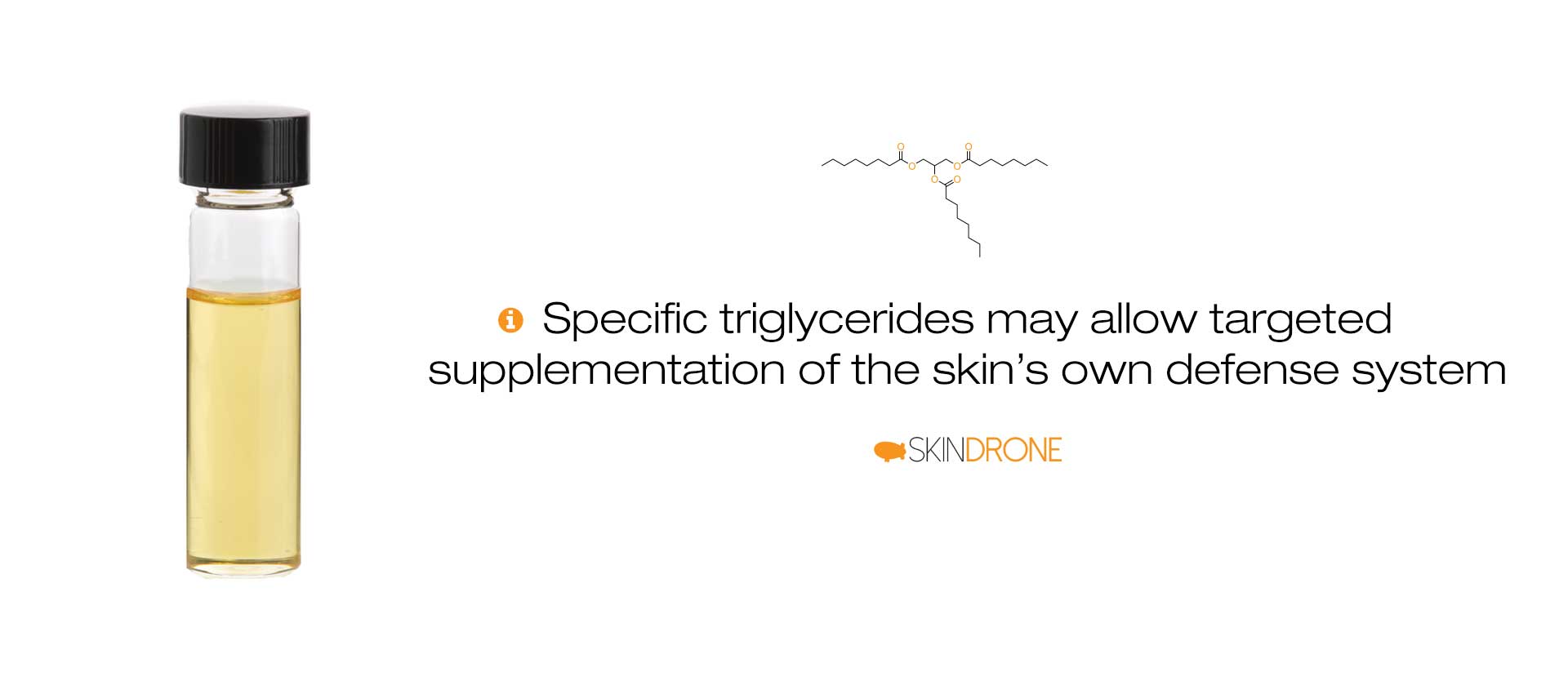
Other Anti-Fungal Options
Beyond pyrithione zinc and ketoconazole, numerous other anti-fungal treatments exist, both prescription and over-the-counter.
These include:
- Bifonazole
- Miconazole
- Fluconazole
- Metronidazole
- Ciclopirox
- Terbinafine
- Nystatin
And agents not strictly classified as anti-fungal but sometimes used:
- Selenium Sulfide
- Sulphur
- Tar
- Lithium Succinate
- Benzoyl Peroxide
- Propylene Glycol
This list is for informational purposes; detailed discussion of each is beyond this article’s scope.
Less-Documented Natural Remedies
Many other potential Malassezia treatments are discussed online, though scientific research may be limited:
- [Apple Cider Vinegar][6]
- Baking Soda (Sodium Bicarbonate)
- [Sea Salt][7]
- [Coconut Oil][8]

Stimulating Hair Growth After Malassezia Control
Once scalp health is improved and Malassezia is managed, hair growth should naturally resume. For significant hair loss, accelerating this regrowth can be beneficial.
This section explores methods to potentially speed up hair restoration.
Enhancing Scalp Circulation for Hair Growth
Boosting blood flow and nutrient delivery to hair follicles is a logical approach to encourage hair growth, similar to supporting other bodily repair processes.
L-Arginine
L-arginine, a non-essential amino acid, is often used by athletes to enhance blood flow and muscle recovery due to its role in nitric oxide production.
Nitric oxide, derived from L-arginine, exhibits both anti-fungal properties [17] and vasodilating effects (blood vessel widening) [18]. Increasing L-arginine availability on the scalp might enhance local nitric oxide, improving blood circulation.
L-Arginine in Hair Restoration Products
Many hair restoration shampoos and conditioners incorporate L-arginine. Examples include:
- [Andalou Naturals Moisture Rich Shampoo][9]
- [L’Oreal Paris Arginine Triple Resist Reinforcing Shampoo][10]
- [Suave Men 2 in 1 Shampoo and Conditioner][11]
- [Batiste Dry Shampoo, Strength and Shine][12]
- [Avalon Organics Peppermint Revitalizing Shampoo][13]
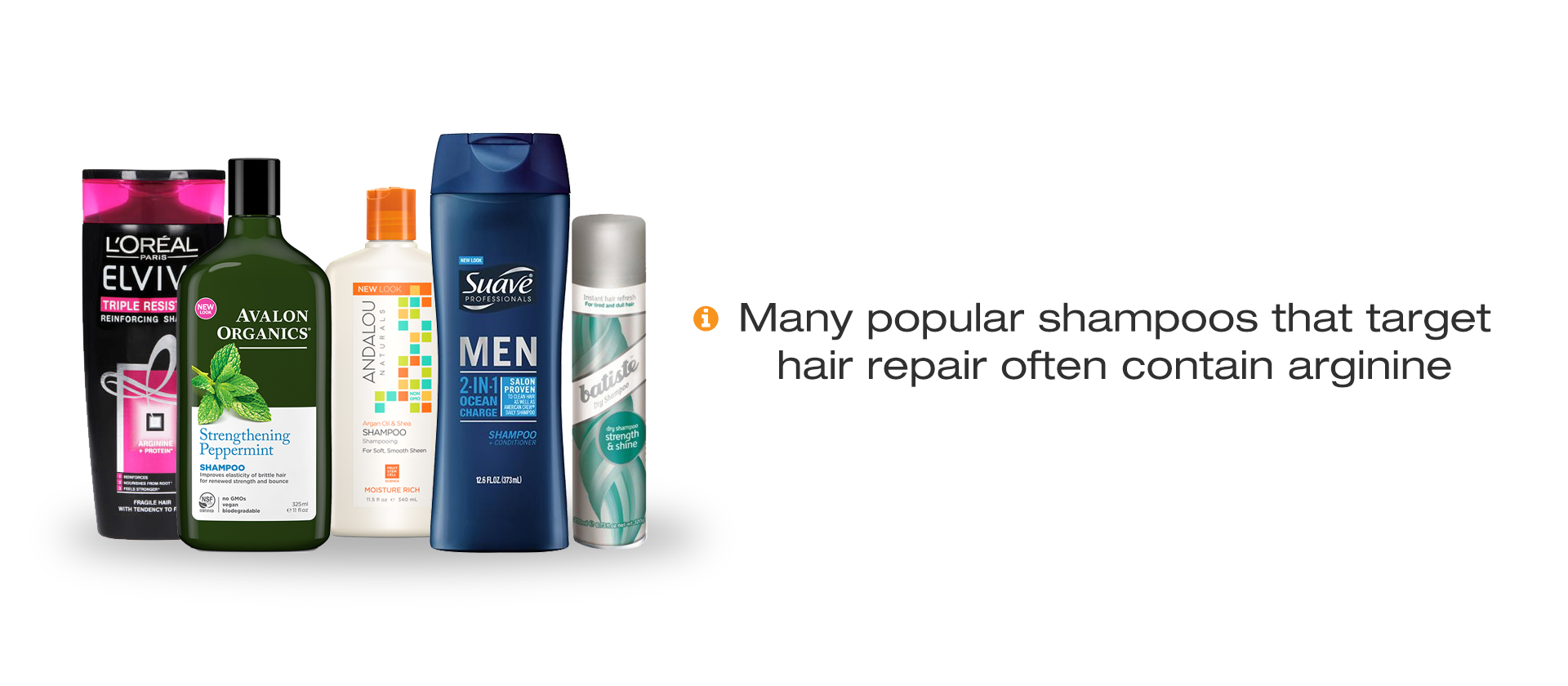
However, product ingredient concentrations are rarely specified, and shampoos are quickly rinsed off. This makes it hard to determine if shampoos deliver enough L-arginine for significant benefit. Leave-on products with known L-arginine concentrations might be more effective.
Andalou Formulation Change – 2017
Note: Andalou Naturals Moisture Rich Shampoo’s formula has changed, becoming drier. A personal oil-based formulation (originally for facial skin) is now used to counter dryness. my own oil based formulation
Scalp Massage for Hair Growth?
Scalp massage, a simple and free technique, can potentially improve scalp blood flow.
Research is limited, but patents describe head massage devices for stimulating blood flow and hair growth. A relevant example is:
- [Drug-free method for treatment of the scalp for therapeutic purposes][14]
A Cameron University case study indicated massage, relaxation, and reward were linked to hair loss improvement/reversal [19].
Nutritional Support for Hair Growth
Nutrition is widely believed to impact hair growth and quality. While research directly linking specific nutrients to hair growth is limited, nutrient deficiencies can contribute to hair loss or thinning.
This section explores key nutrients and their potential role in hair health.
Biotin and Hair Growth: Separating Fact from Fiction
Claims about biotin’s hair regrowth ability are largely anecdotal. Biotin deficiency can be genetic or acquired (dietary/lifestyle). Acquired deficiency is rare in adults, mainly seen in alcoholism, malabsorption, pregnancy [20], or unusual diets.
Raw egg consumption is a notable cause of acquired biotin deficiency. Egg white contains avidin, a protein that binds biotin, preventing absorption. Cooking denatures avidin, eliminating this effect [21].
Biotin Research: Limited Hair Growth Evidence
Research on biotin supplementation for hair loss is sparse. A small study on 46 women showed no benefit [22], and clinical trials demonstrating efficacy are lacking [23]. Some potential benefit is suggested by biotin’s positive effect on brittle nails [24], but this is insufficient for broad recommendations.
Most biotin research focuses on infants and children, where deficiency risk is higher.
Genetic biotin deficiency can be severe, even fatal in early infancy, causing dermatitis and severe alopecia [25]. Later-onset genetic deficiency might manifest as reduced or absent hair growth.
Acquired biotin deficiency is uncommon due to biotin’s presence in diverse foods and gut bacteria synthesis.
Zinc and Hair Loss: An Inconsistent Link
Numerous online sources claim zinc deficiency causes hair loss and that supplementation promotes regrowth. However, medical evidence is mixed and less conclusive.
A 1981 study found no hair improvement with zinc sulfate supplements in 46 hair loss patients [26]. Conversely, a 2009 study on alopecia areata patients showed promising results [27].
Smaller case studies suggest zinc’s potential to reverse hair loss:
- [Diffuse alopecia in a child due to dietary zinc deficiency][15]
- [Reversal of Hair Loss following Vertical Gastroplasty when Treated with Zinc Sulphate][16]
- [Clinical response of alopecia, trichorrhexis nodosa, and dry, scaly skin to zinc supplementation][17]
However, single-patient case studies are insufficient for general recommendations.
Ensuring adequate zinc intake through a balanced diet is advisable. Seafood and meat are excellent sources. Plant sources like seeds, beans, peas, and lentils provide some zinc, but vegetarians are often advised to consider supplementation due to potentially lower zinc intake.
Iron and Hair Growth in Deficiency Cases
Iron deficiency is a widespread nutritional issue, potentially affecting intellect and immunity ([source][18]).
A 1963 study indicated iron deficiency as a direct cause of hair loss in women, reversible with iron therapy [28]. This sparked interest in iron for hair loss. However, later, larger studies have not consistently shown a strong link between iron deficiency and hair loss:
- [Iron status of patients with alopecia areat][19]
- [No association between serum ferritin levels >10 microg/l and hair loss activity in women][20]
- [Iron deficiency and hair loss: the jury is still out][21]
While iron might play a role in some hair loss cases, evidence for universal iron deficiency screening in hair loss patients is lacking [29].
A balanced diet is key to preventing iron deficiency. Animal sources (meats, seafood) are generally preferred over plant sources and iron-fortified foods [30].
The Paradox of Over-Supplementation
Excessive intake of certain vitamins and nutrients can paradoxically lead to hair loss.
Vitamin A over-supplementation is the most established cause [31]. Excessive vitamin E, selenium [32], and folic acid [33] have also been suggested as potential culprits. A balanced diet is generally preferable to excessive supplementation.
Achieving a perfectly “clean” diet, as often promoted online, can be stressful.
Focusing on incorporating beneficial foods like apples, cabbage, and carrots, and adhering to dietary principles like glycemic index and lipid balance, can be more practical and less stressful.
The SkinSupport program’s first two modules offer further insights:

Improving Digestion
There is delicate relationship between your digestive system and the state of your skin. By improving one, you provide the building blocks needed by the other.

Achieving Dietary Balance
Dietary choices should not be overly focused on single nutrients and components. Instead, balance must be achieved to provide the stability your immune systems need to thrive.
Additional Nutrition-Hair Loss Links
Other nutritional deficiencies linked to hair loss in medical literature include:
Be cautious of online recommendations lacking scientific basis, often stemming from unreliable sources. Prioritize research-backed information.
Nutrition and Hair Growth: A Summary
Research suggests nutritional deficiencies can cause hair loss, and correcting these deficiencies can restore normal hair growth. However, supplementation without diagnosed deficiency may be counterproductive.
A diverse, healthy diet tailored to your lifestyle is likely the best nutritional approach for most people.
Direct Hair Growth Stimulants
Beyond general health measures, specific treatments directly target hair growth, irrespective of Malassezia. Minoxidil and castor oil are popular examples.
Minoxidil: A Well-Known Hair Growth Drug
Minoxidil is a widely recognized hair growth stimulant. Its effectiveness led to off-label prescriptions for baldness even before FDA approval in the 1980s.
Minoxidil is a potent vasodilator [37], likely working by increasing scalp blood flow.
Drawbacks include delayed results and potential hair loss recurrence upon stopping treatment [38].
Minoxidil products are now readily available over-the-counter under various brands (Kirkland, Equate, etc.) and generally receive positive user reviews, confirming their effectiveness.
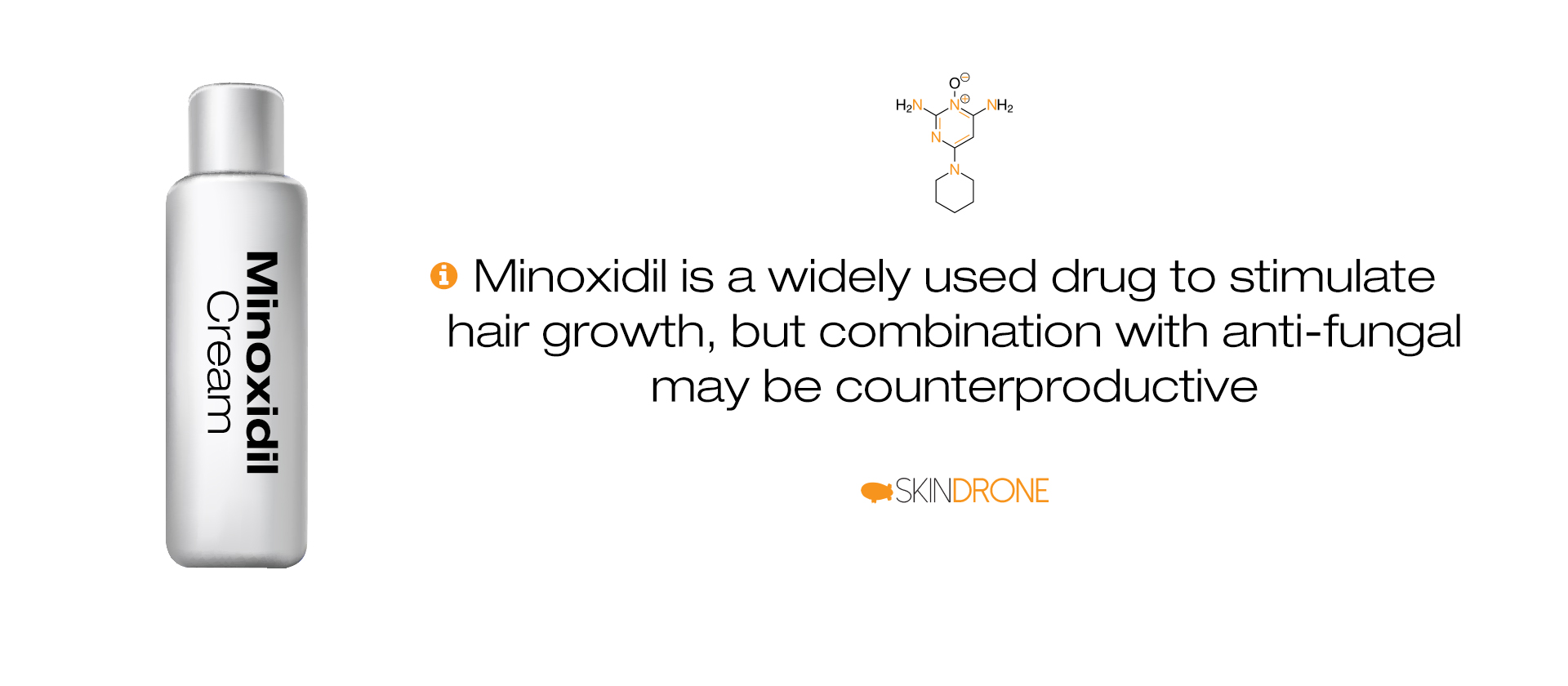
Minoxidil Side Effects
Minoxidil can have side effects, including paradoxical temporary hair loss in some individuals, scalp irritation, unwanted hair growth elsewhere, and changes in hair texture or color.
Minoxidil Research Highlights
- A 5% minoxidil solution is more effective for hair regrowth than a 1% solution [39].
- 5% minoxidil foam and 2% solution show comparable results [40].
- Minoxidil can cause atopic dermatitis or scalp scaling in some, potentially exacerbating seborrheic dermatitis, often due to formulation ingredients like propylene glycol, not minoxidil itself. Switching formulations may resolve this [41].
- Combining minoxidil with zinc pyrithione treatment does not enhance results beyond zinc pyrithione alone [42].
Castor Oil for Hair Growth: A Natural Option
Castor oil is frequently touted online as a highly effective natural hair growth treatment, with claims of decades-long use.
Ricinoleic acid, its main component, is believed to boost scalp circulation.
However, medical research on castor oil for hair growth is very limited. A 1982 review article on castor oil uses [43] mentions its traditional use in Ethiopia for seborrhea and tinea (another fungal skin infection), and notes an Italian recognition of alcoholic castor oil solutions for anti-seborrheic action and hair growth promotion.
Enhancing Castor Oil with Rosemary Essential Oil
Adding rosemary essential oil to castor oil is often suggested to further enhance its hair growth effects. Again, research is scarce. A patent for hair growth stimulation includes rosemary extract ([source][22]).
Caffeine for Cellular Stimulation
Topical caffeine application may improve skin barrier function [44], increase hair shaft diameter [45], and stimulate hair growth. Caffeine shampoos are considered effective delivery methods ([source][23]).
One study showed an 8.14% reduction in hair pull test after 2 months and a 15.33% reduction after 4 months using a caffeine preparation ([source][24]).
Another study confirmed caffeine’s significant stimulation of hair follicle growth, but cautioned that high concentrations might be detrimental due to over-stimulation and energy depletion [46].
While promising, caffeine’s hair growth benefits require further research. However, it may be a valuable addition for those seeking to improve hair growth.
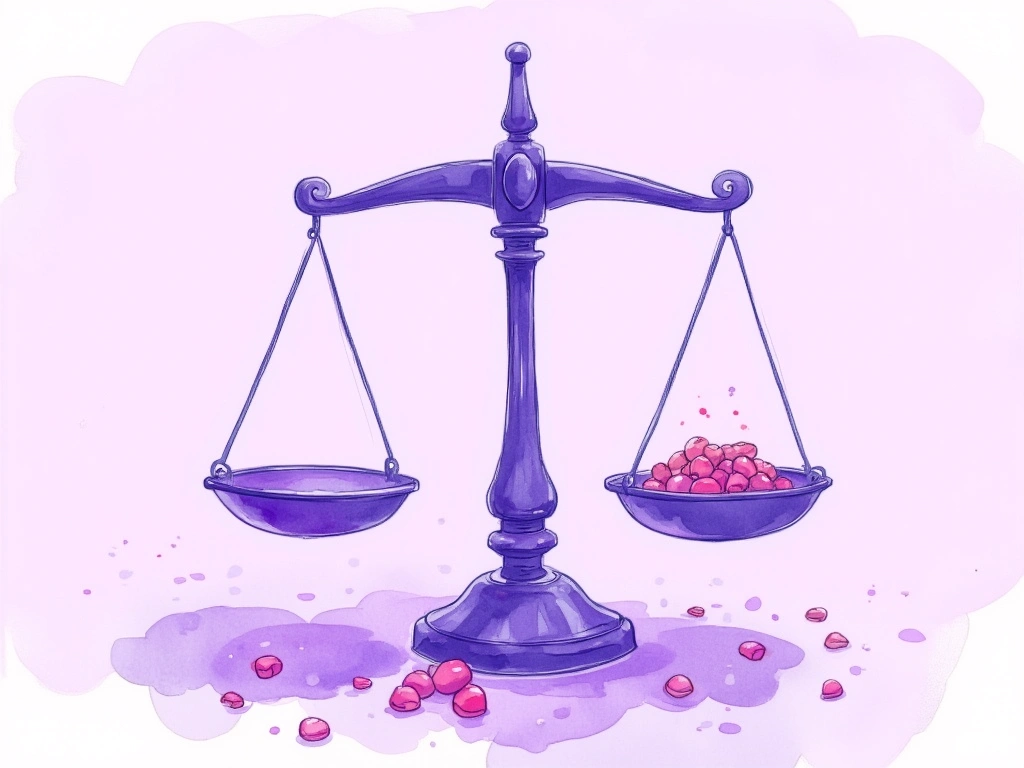
Androgens, Seborrheic Dermatitis, and Hair Loss: The Hormonal Link
Androgens, often called “male hormones,” are key regulators of human hair growth [47], present in both sexes but more abundant in males.
Androgens trigger the transition from fine baby hair (vellus hair) to thicker, darker hair during puberty. However, they have the opposite effect on scalp hair in predisposed individuals, causing hair follicle miniaturization and pattern baldness with age.
Intriguingly, androgens also activate sebaceous glands during puberty and regulate their activity throughout life. Given sebum’s role in seborrheic dermatitis, androgens may influence seborrheic dermatitis development. Supporting this are:
- Malassezia feeds on sebum, regulated by androgens [48].
- Seborrheic dermatitis often emerges post-puberty, when androgen activity increases [49].
- Men have higher androgen levels, and seborrheic dermatitis is more prevalent in men [50].
Despite these connections, the precise relationship between androgens, hair loss, and seborrheic dermatitis remains unclear. Some studies suggest androgens play a role in seborrheic dermatitis, but most agree they are not the primary cause [].
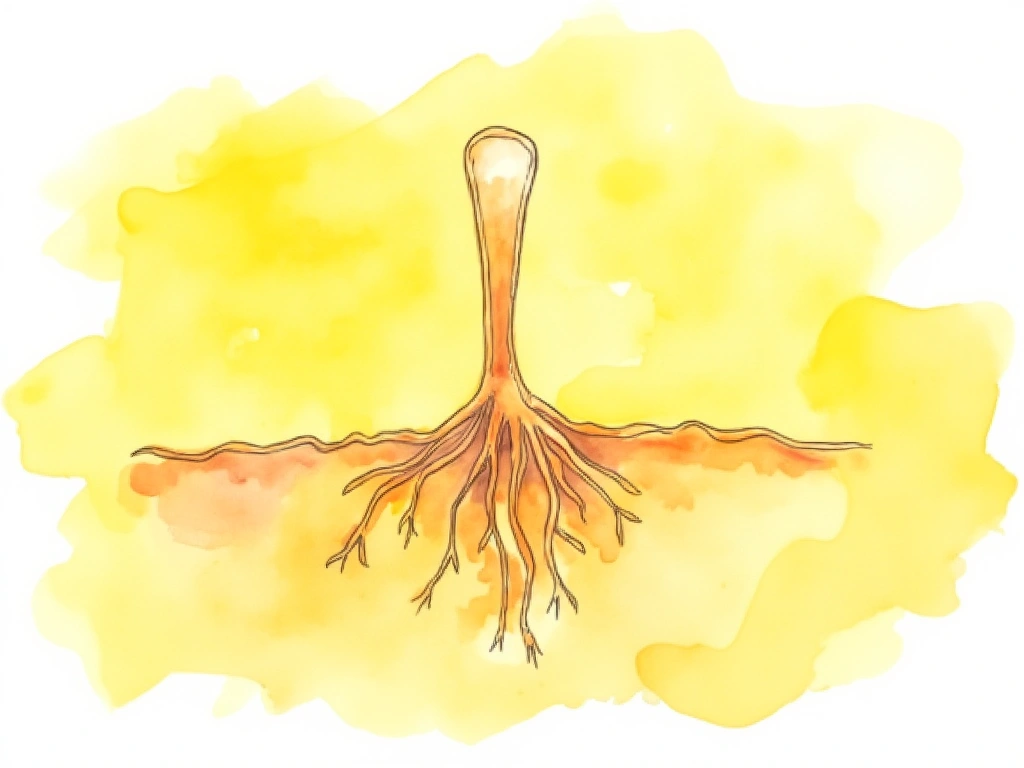
Conclusion: Reversing Seborrheic Dermatitis and Restoring Hair Growth
We’ve explored Malassezia fungus as a potential driver of hair loss in seborrheic dermatitis. Malassezia’s reliance on sebum, produced by sebaceous glands near hair follicles, suggests its overgrowth can negatively impact hair growth.
Reducing Malassezia colonies is a key strategy to potentially reverse hair loss and promote regrowth. Various topical anti-fungals (pyrithione zinc, ketoconazole, raw honey, etc.) are available. Consistent use of a suitable treatment may be necessary if the scalp’s natural microbial balance is disrupted.
Common Malassezia Treatments:
- Pyrithione Zinc (Head and Shoulders)
- Ketoconazole (Nizoral)
- Azole Anti-Fungals (Bifonazole, Miconazole, Fluconazole, Metronidazole)
- Ciclopirox
- Terbinafine
- Caprylic Acid
- Nystatin
- Selenium Sulfide
- Sulphur
- Tar
- Lithium Succinate
- Benzoyl Peroxide
- Raw Honey
Adverse reactions to products can occur, potentially due to inactive ingredients. Carefully reviewing ingredient lists to avoid known irritants is advisable when selecting a treatment.
Supporting hair growth through scalp stimulation (vasodilation for improved blood flow) may also be beneficial. Minoxidil and castor oil are potential options. However, addressing seborrheic dermatitis may be sufficient for hair regrowth in many cases.
Strategies to Enhance Hair Growth:
- L-arginine
- Caffeine
- Scalp Massage
- Minoxidil
- Castor Oil
Nutritional deficiencies, particularly in iron, zinc, and L-lysine, can hinder hair growth. Addressing these is crucial. Medical testing is recommended before supplementation, as over-supplementation can be detrimental. A balanced, healthy diet remains paramount.
In summary, resolving seborrheic dermatitis is often the primary step to address associated hair loss. However, incorporating hair growth-promoting strategies can potentially accelerate recovery.
2018 Update: The importance of overall immune system health for skin and hair is still strongly believed. If you suspect internal factors contribute to your issues, explore the SkinSupport{.skin-support-bottom-link} program.
Share your experiences, suggestions, or questions in the comments below – your input is valuable!
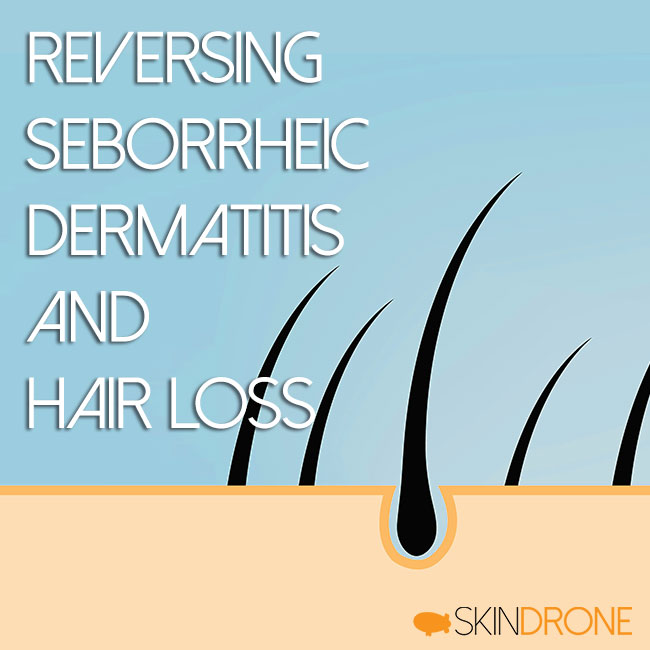
Thank you so very much for your article! I have searched high and low for information pertaining to my outbreak and hair loss caused by a severe allergic reaction to tape-in real hair extensions. Stupidly, I persevered with the extensions thinking that the symptoms would go away. Consequently, 3 months later that approach ended up with me having two bald patches, under my hair, on each side of my head. In addition, the whole front of my body (under breasts, belly button and groin area followed suit! Good news is that it’s slowly dissipating using an array of different treatments including diet and natural/OTC creams. I’ll add some more of your suggestions to my routine.
Thank you, your article was by far the best – you know your stuff!!! 🙂
Awesome article. So much helpful information
Hi there, love this content!! Thank you.
I saw that your reference of #6 actually says ” In addition, KTZ and PTO increased the mean hair shaft thickness while discretely decreasing the sebum output at the skin surface.”…meaning that the mean hair shaft thickness increased, rather than decreased as mentioned here:
“Regular shampoo usage (2-3 times per week) may result in a decrease in hair shaft diameter (hair thickness)”
I only mention this because no one with hair loss wants a decrease in hair shaft diameter! I was scared to use the dandruff shampoo.
Dear Human,
Thank you for pointing this out.
From a quick review, the paper referenced did mention that KTZ (Ketoconazole) and PTO (Piroctone olamine) increased hair shaft diameter.
However, ZPT (zinc pyrithione) usage resulted in decreased hair shaft diameter. Here is the relatavent part of the paper:
> The efect on the mean hair shaft diameter was contrasted between the three groups of volunteers (KTZ: 5.4%, PTO: 7.7%, ZPT: -2.2%).
Accordingly, in the artice, the decreased hair shaft diameter was specifically in relation to zinc pyrithione usage.
On a side-note, thank you for the kind feedback regarding the writing. Hopefully with time, more discoveries lay ahead and a more clear understanding of the condition emerges.
Please let me know if you spot anything else.
Michael, I have read all of your research and firstly, want to thank you. I would be lost without you. I’m a 26 year old female who went a year with no diagnosis and being told by everyone I was being over dramatic/paranoid about the my hair loss that I started having. My dermatologist wouldn’t even look at my scalp without doing a scalp biopsy… so I started doing my own research… went to see my regular physician for blood test and asked her if she could look at my scalp and she immediately said “oh this is definitely seborrheic dermatitis!”… (which I knew but didn’t want to be true…) With that being said.. I’m doing everything possible and I just cannot seem to get rid of this on my scalp… I have lost so much hair that I’m embarrassed to go out in public. Is there anyway you can email me and I can show you everything I have tried? I have spent 1000s of dollars in this past 8 months.. I appreciate tremendously everything you do for all of us suffering with SD.
-kels
Hello,
Thank you for providing all this information. It’s the fist time I found something explaining the relationship between hair loss and Seborrheic Dermatitis that makes sense. I am trying to figure out why my 12 year daughter is having hair loss. Her lab results have not shown any nutrition issues or thyroid problems. Our dermatologist is suggesting Rogaine but has not be able to give a clear reason why this is happening. I keep thinking that there is something going on and it occurred to me that she has had a history of dandruff and last winter had a red scaling spot on her scalp that the doctor said was eczema but I keep thinking how do they know it’s not ring worm or might be fungi related. The doctor prescribed Clobetasol Propionate for the eczema spot and that makes in go away but it has been reoccurring after a week or 2.
My daughter washes her hair at night and often goes to bed with wet hair and I am wondering if that is contributing to the problem.
After reading your article and I amthinking of trying the Nizoral shampoo.
Thanks again!
~Kelly
I’ve had SD on my face and hair for a couple of years now. I have totally cured it on my face from one inexpensive moisturizer called child’s farm. It’s basically a miricle cream as far as I’m concerned, there is also a child’s farm shampoo and this has reduced the flakes in my hair significantly…if you’re suffering from SD, I’d urge everyone to look it up and see the benefits it has…it’s nothing short of amazing, it also cures other skin problems like eczema & psoriasis.
Hi Will, are you still using Childs Farm? I am interested in getting. Thanks Anna
I just got diagnosed today as having SD after years of being told by a former GP that it is psoriasis, therefore not getting the correct treatment. I am so pleased that I have stumbled across this article as it explains what I need to know so thanks.
I am suffering from seborrhoeic dermatitis … and i have excessive hair loss .. i am 23 yrs old male … is it possible for hair regrowth in this condition .. ?
The best advise i can give is to use Selson blue. Just 2 weeks after using it, IT WAS ALMOST PERFECT!!
I have had Seborrheic Dermatitis for at least 10 years. I have used 2 medicated shampoos before for treating it, other than the usual Head and Shoulders shampoo.
Try it and look at the benefit for yourselves.
I came down with SD when I turned 19. I got a perm and immediately was affected with SD in the front of my hairline. No dandruff or SD treatments (from Dr or shampoo) worked. I was told it was permanent and I’d just have to learn to live with it. Head and Shoulders worked better than anything else but it failed to stop the progression of SD. It spread to my eyebrows and face. By the time I turned 20 I had shaved my hair and eyebrows off in a last ditch effort to save them. My eyebrows grew back. My hair was too far gone. The hair loss was permanent. I’ve had SD for 25 years now. I’ve learned to control it by keeping excessive oil wiped off my scalp and face with a rag and using head and shoulders anywhere a flare up gets really bad. Unfortunately I am bald and it’s never coming back. This disease is awful. The greassines, the scaling, the insane itching and the hair loss have been traumatic for a teenager to go through. As an adult I just get on with my life and deal with it. I’m a fighter. I always adapt to anything. Still, there isn’t a day I don’t wish this evil away. I feel for all of you that are struggling with this. We’re the group that science forgot. Not important enough to cure but just important enough to discover lifelong treatments instead.
Here’s a shampoo worth trying: Aveda’s Scalp Benefits. For 2 years, I had pretty bad seborrheic dermatitis, and tried all the different things the dermatologist told me about. At best, they just kept it somewhat in check; some things seemed to do almost nothing. A hairdresser tried the Aveda shampoo; it worked, and for the last 6+ years, I’ve used it every time I seemed to have a small outbreak. I also used it on my face & ears. It may not work if you have a really severe case, but if it’s milder, try it. Aveda stores will usually give you samples (bring a small container with you so they can’t use not having a container as an excuse).
Thanks for all the information; it’s very useful and appreciated.
One little note (I’m mentioning this because you make the mistake many times): if you cannot replace “its” with “it is”, then it is spelled without the apostrophe. “It’s” means “it is”. “Its” is possessive.
Biotin and It’s Role in Hair Growth
In the aboe example, there should be no apostrophe; “its” is possessive, referring to “biotin’s role in hair growth.
You’ve got to be kidding me, I’ve been battling scalp and baldness problems for months now, this is the most helpful info I’ve found, and you are correcting spelling??? Get a grip!
Did you ever find anything to help with your symptoms? I am still searching. -kels
Maybe spell ‘above’ correctly to be taken serious as an expert in grammatical and or spelling errors!
I cannot believe your attack on the author because of grammar. The subject matter is far more important than a few grammatical errors so please get over yourself and stop making a fool of yourself or is it the attention that you seek
Hi , this is preeti. I have been suffering from severe hair loss since the last 10 years . It started with some features of seborrheic dermatitis..With excessive flaking etc . Now also flaking is still there ..May be because I’m using minoxidil ..But I have lost almost 90% of my hair .. have episodes of pityriasis versicolor as
well ..Almost every 2nd year..
Do you have any research results with my profile?? It would of really great help ..Thank you
I have been suffering from soherbic dermatitis since puberty and have lost my 90% hair.I have made a shampoo with 5% sulphur and 5% Camphor and it seems to be working
Sorry for typos, I meant hairloss.
It just sucks how ambiguous all literature concerning link between SD and hair loss is. I mean, why doubt the link when almost everyone having SD also develop hairless – moderate to severe. Instead of sending a patient to 1000 different types of doctors who would anyway conclude they cant confirm the REAL reason of hairless, one should rather focus on fighting SD if it’s clear that the hairless started from the point of contracting SD.
Good site Michael, i love how you delved so deep into all of this information to build this haven for us, people in need, looking out for answers.
I have no doubt you are one of the greatest contributors in the scientific field to the understanding of Seborrheic Dermatitis.
About hair loss, i don’t have it in my hair, though some years ago (i have SD for about 10/11/12 years) i noticed a bit of thinning in my lower frontal hair line, above the sideburn area. But i do not even care about this, because it is not “proper hairloss”, i do have though this strange thinning of my body and facial hair, i noticed first my mustache growing slower, after that i noticed it vanishing and thinning in some areas, now i have this uneven, patchy, not complete beard.
The doctor said it was Alopecia Areata (she made no lab tests), but i don’t think so, because of the pattern, i don’t have circular areas or whatsoever anywhere over my body, just a diffuse thin hair. This hair loss never responded to minoxidil, neither to diet change, never went away, never relocated the area (like in alopecia suffers), haven’t responded to a bit o steroids i applied near my sideburns, nothing seemed to help, i never found anything about this, seems like i’m the only in the world with this strange (very likely not, but the information is scarce), strange, strange beard/body hair loss/thinning.
About the DS, i have quit 1 month ago the usage of topical steroids, Clobetasol Propionate (ultra potent class), and cleaned my diet even futher (something i’ve been doing for many years), it’s too early to tell, but it seems like i’m getting better, and i will do no other thing than look for my diet/exercise in 2017, after that if i don’t have a remission, i will look for supplements, 2018, and if it doesn’t work, i can try something locally over my face, 2019. That way i can understand better how everything works, easy to say i will do this, hard to follow through this, i hope that i have the strength, and come back to tell (if i remember and follow my word) what i find.
Oh shit! Still here struggling (though i fucked up my diet in late 2017 and now i am slowly returning back), got to take the supplements route now, i will start with ZINC and VItamin C serum.
I was diagnosed with Seborrheic dermatitis but I was treating it with daily washing for years without using antidandruff shampoos. This kept flakes away but didnt solve the problem. My hair thinned a lot. I had an episode of extreme stress last year which led to increased symptoms and eventual diagnosis of seborrheic dermatitis. Learning now that it may have contributed to my thinning and shedding, is the hair lost over the years reversible too or just the recent hair loss that occured just before using antidandruff shampoo? Also, is it safe to use Nizoral and other shampoos and conditioners or is mixing unsafe (either the same day or on in-between treatment days)? Thank you for the help. I appreciate this so much.
My doctors recommended I use various medicated shampoos after the zinc pyrithione shampoo I had been using for years seemed to stop being effective. I now alternate between four different medicated shampoo types each time I wash my hair. I think the best treatment is to wash your hair with a medicated shampoo at least 4-5 times a week for moderate SD or daily for severe SD. I also think working on managing/lowering stress is key to helping control SD and its potential causes.
Great article, Michael! Your research is always top notch.
Any specific findings or insights on eyebrow hair?